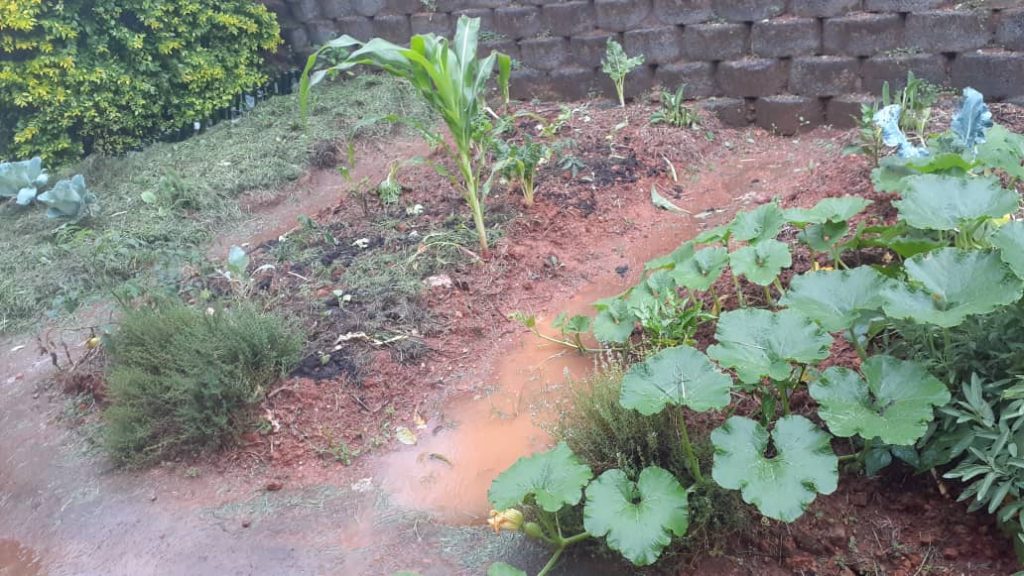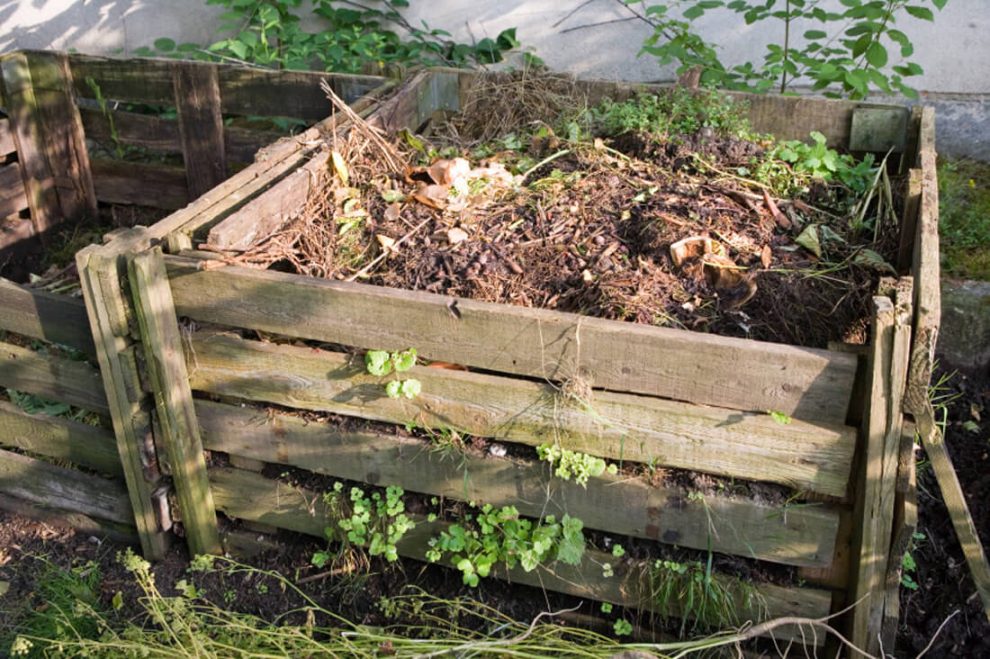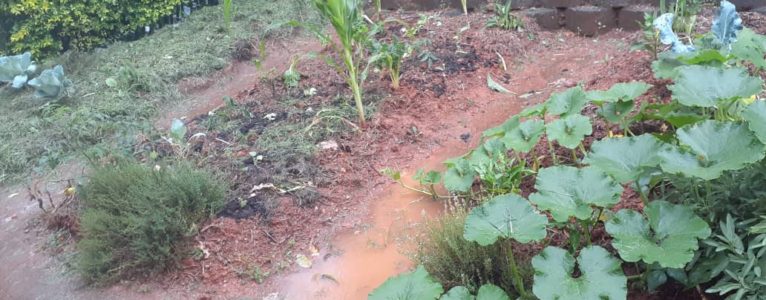
Eswatini has just been hit by Cyclone Eloise and a large part of the country suffered from floods that damaged not only infrastructure but also agricultural fields and backyard gardens.
Flood water can be contaminated with a variety of things including sewage, farm run-off, industrial run-off, and other pollutants. Furthermore, most vegetables and fruits do not tolerate waterlogged soils. Waterlogged soils can reduce root growth since the water has replaced the oxygen within the pores of the soil. This can also lead to the plants developing diseases.
There are a few steps that one has to follow to restore the garden into its former glory after such disasters have occurred.

Here are a few easy measures you can take to bring your garden back to good health:
- Wait: First take some time off and wait for the water to recede. After the water has ebbed, wash the mud off the leaves of the plants to allow photosynthesis and to see the damage done by the floods.
- Clean: Remove the large trees and debris that may have been deposited by the flood water
- Restore the planting beds: Restore the beds of the vegetables and put in mulch on the beds. Be sure to reapply organic fertiliser or animal manure to replenish nutrients that may have been washed away by the rains.
- Compost: Make a compost pile with the layer of leaves, stems from the mud which was flushed by the heavy rains.
- Cover exposed roots: Check for visible roots if there are, bury them so they can grow back again to prevent the plant from dying.
- Bio – pesticides: Be prepared for any pest and diseases that might break out due. Use organic methods such as baking soda and vinegar or garlic and chilli pepper sprays..
- Prepare for future storms: The next step is to prepare for the future in order to minimise the probability of your vegetable garden being damaged by floodwater.
- This can be done by creating a drainage that will channel the water to the soil away from the plants.
- Growing crops on elevated or raised beds can significantly improve soil drainage, and soils with high amounts of clay can be amended with sand or organic matter to improve drainage.
NOTE: Do not harvest and eat vegetables or fruits that are growing in the inundated garden immediately. Washing and boiling may remove bacteria, but it will not remove industrial or roadway contaminants.


